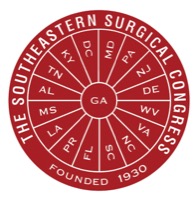
Nashville, Tenn.—The carbon dioxide insufflation used in laparoscopic surgery to create pneumoperitoneum is associated with some challenging metabolic changes and can cause pain. New research suggests low-pressure pneumoperitoneum reduces postoperative pain, with other positive outcomes.
As part of a quality improvement program at the University of South Alabama Medical Center, in Mobile, researchers who had been performing laparoscopic procedures with standard pressure, at 15 mm Hg, wanted to find out if they could complete cases at a lower pressure of 8 to 12 mm Hg.
“Our cases varied from general surgery and foregut surgery; our primary outcomes included post-op pain scores and morphine milligram equivalents (MMEs) at discharge or 24 hours after surgery, whichever came first,” said John Paul Saway, a second-year medical student presenting on behalf of his co-authors at the 2022 Southeastern Surgical Congress.
The investigators’ secondary outcomes included operating times, intraoperative peak inspiratory pressure, end-tidal carbon dioxide (EtCO2) and the need to convert to standard pressure.
The results showed that “there was significantly less consumption of MMEs in the low-pressure group, at 11.7 compared with 17.4 in the high-pressure group. In addition, we see that many of the low-pressure patients had an MME score of zero,” Mr. Saway said.
In addition, a significantly decreased peak inspiratory pressure value was observed in the low-pressure group, at 24.7 compared with 31.4 in the high-pressure group, and EtCO2 levels also were lower in the low-pressure group.

“The question then becomes what factors contribute to completing cases at 8 mm Hg?” Mr. Saway said.
He noted that his institution uses two different insufflation systems—constant mode and demand mode—both of which are available in all operating rooms. All of the cases using low pressure and constant mode were able to be completed at 8 to 12 mm Hg, whereas 17% of the low-pressure cases using demand mode needed to be increased to standard pressure.
“Looking at the 8-mm Hg group alone, 58% of cases were able to be completed in constant mode compared with only a third of demand mode cases at 8 mm Hg,” Mr. Saway said.
In addition, with demand mode, surgeons needed to increase the pressure with heavier patients, but constant mode was able to handle a wider range in body mass index, up to 60 kg/m2, with no patients needing to be converted to 15 mm Hg.
“Overall, we saw that the constant insufflation system improves visualization throughout the procedure and increases the ability to perform more procedures at 8 mm Hg,” Mr. Saway said.


